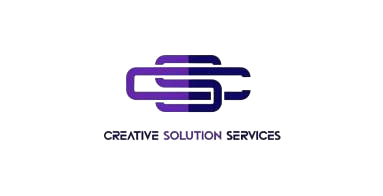Graphic Designing: The Art of Visual Communication
Graphic designing is not merely making pictures; it is the art of communication via design. From social media and websites to branding and advertisements, graphic design is instrumental in defining the identity of individuals and businesses. In this blog, we will discuss what graphic designing is, the tools and skills required, its uses, and future trends in this constantly evolving field.
What is Graphic Designing?
Graphic design is the process of visually communicating ideas and messages using typography, imagery, color, and layout. It blends creativity and technology to produce designs that are both aesthetically pleasing and functional. Whether it’s designing a business logo, a website interface, or a social media post, graphic design plays an essential role in how information is presented and perceived.
The Importance of Graphic Design
- Brand Identity & Recognition: A good logo and consistent visual elements help companies create their brand identity and become easily recognizable.
- Effective Communication: Graphic design communicates messages in a visually appealing manner, making information more understandable and memorable.
- Improved User Experience: Websites, mobile apps, and other digital platforms benefit from intuitive designs that enhance user interaction.
- Boosts Marketing Efforts: Quality visuals improve marketing strategies, attract more customers, and increase engagement.
Vital Tools for Graphic Designing
Graphic designers use a variety of tools to bring their creative ideas to life. Let’s break it down:
Software & Applications:
- Adobe Photoshop: Industry-leading software for image editing, retouching, and digital painting.
- Adobe Illustrator: Perfect for designing vector graphics like logos, icons, and illustrations.
- Adobe InDesign: Ideal for designing print materials like brochures, magazines, and flyers.
- Canva: A beginner-friendly platform for creating quick and professional designs.
- Figma & Sketch: Great for UI/UX design and prototyping.
Hardware Requirements:
- High-Resolution Monitor: Ensures color accuracy and design precision.
- Graphics Tablet: Tools like Wacom provide more control for digital illustration.
- Powerful Computer: A system with good processing power and RAM to smoothly run design software.
Core Skills Every Graphic Designer Needs
Graphic design isn’t just about using tools — it requires creativity, strategy, and a deep understanding of design principles. Essential skills include:
- Typography: Understanding fonts, spacing, alignment, and matching is crucial for effective visual communication.
- Color Theory: Colors evoke emotions and set the tone of a design. Knowing how to use color combinations can amplify your message.
- Composition & Layout: Organizing elements properly creates visual harmony and makes the design more impactful.
- Creativity & Innovation: Thinking outside the box and exploring new design ideas help your work stand out.
- Attention to Detail: Small aspects like alignment, spacing, and consistency greatly influence the final product.
Applications of Graphic Design
Graphic design is widely used across industries. Some key applications include:
- Branding & Logo Design: Logos and brand elements shape a company’s visual identity.
- Marketing & Advertising: Graphic design is essential for crafting compelling ads, social media content, and promotional materials.
- Web & UI/UX Design: Websites and mobile apps rely on thoughtful UI/UX design for seamless user experiences.
- Print Design: Magazines, posters, business cards, and brochures all rely on graphic design for effective communication.
- Social Media Graphics: Engaging social media visuals is crucial for brand visibility and audience engagement.
Future Trends in Graphic Designing
The design industry is constantly evolving with technology. Exciting future trends include:
- 3D Design & Typography: Adding depth and realism to make designs more immersive.
- Minimalism & Simplicity: Clean, clutter-free designs with a focus on essential elements.
- AI-Powered Design Tools: Artificial intelligence speeds up design processes and enhances creativity.
- AR & VR Experiences: Augmented and virtual reality are changing how users interact with designs, especially in gaming and advertising.
- Hand-Drawn Illustrations: Custom hand-drawn elements add personality and authenticity to designs.
How to Become a Graphic Designer?
If you’re eager to step into the world of graphic design, follow these steps:
- Learn the Basics: Study design principles, color theory, and typography.
- Master the Tools: Gain hands-on experience with industry-standard software like Adobe Photoshop and Illustrator.
- Build a Portfolio: Showcase your best work through an online portfolio or social media.
- Take Online Courses: Platforms like Udemy, Coursera, and Skillshare offer excellent design courses.
- Practice Consistently: The more you practice, the more refined your designs will become.
- Freelance & Gain Experience: Work on real projects through freelance platforms or internships to build your expertise.
Conclusion
Graphic designing is a dynamic and rewarding field that blends creativity with technology. Whether you want to craft captivating visuals for brands or contribute to digital marketing strategies, mastering graphic design opens up countless opportunities. With dedication and continuous learning, anyone can become a skilled designer and make a lasting impact in the industry.
If you’re passionate about design, start exploring today — and turn your creative vision into reality! 🚀



